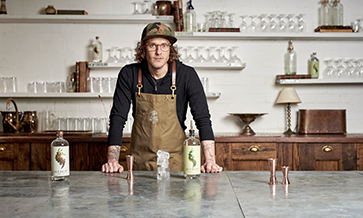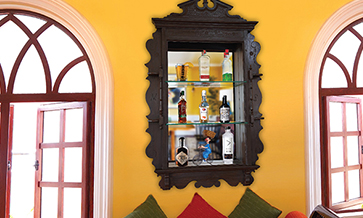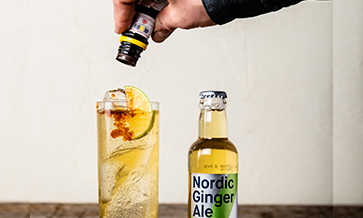Liqueurs date back to ancient times. The Greeks mixed wine with herbs; Roman apothecaries mixed (the then known version of) spirits with honey and fruits for diverse medicinal purposes. Ancient sciences, including Ayurveda, used some form of herbal mixture containing alcohol for medicinal purposes.
Over time, these predecessors to liqueurs as we know them now, were blended and muddled with spices, herbs, foraged fruits and berries to make the concoction more palatable.
Distillation had started to wow people, but the results had to be toned down and thus addition of sweeteners, spices, berries and fruits proved the best way possible. As mankind experimented with infusing more flavours into these medicinal spirits, we began to recognise that these were delicious by themselves!
Soon, liqueurs moved from medicinal shelf to bar shelves, where they would be used to create and invent different libations – the first cocktails! There was a time when cocktails and liqueurs went hand in hand, each imparting flair and flavour to the other for a smooth sip.
Today, there are countless liqueurs in the market categorised for better understanding and differentiation, mainly based on flavour profiles such as coffee, fruits, herbs, citrus, etc.
Liqueur flavouring
There are many methods for flavouring a spirit, at least four of them essentially the same for the last 400 years. By ‘compounding’, a liqueur made of a sugar solution, combined with concentrated flavourings, is added to the base alcohol.
By ‘infusion’, a liquid is steeped with the flavouring (fruits or herbs) prior to distillation. The resultant drink will probably be fairly light in flavouring aromas. By ‘percolation’, flavouring is placed inside the still to catch the distillate as it passes through a screen or net. This process can capture very intense or very ethereal aromas and flavours.
In ‘maceration’, a distilled spirit steeps with the flavouring for a period of time, often weeks. This may not capture more delicate aromas, but will certainly contain the strong and often bitter flavours of a fruit or herb.
The most common way to add flavour these days is to buy it in concentrated form from a fragrance company. Not too romantic, and sometimes not as good, eh?! The quality depends very much on the quality of the raw ingredients, as always, whether or not they are purchased ingredients or factory-made flavours.
Forgotten legacy
Use of liqueurs in recent years has seen a drastic slowdown, especially in India, since we suddenly mimicked the global idea of in-house tinctures, syrups, cordials and shrubs. These freshly made concoctions may or may not contain alcohol, but they often substitute liqueurs in cocktails.
The trend of twisting cocktails for originality resulted in many classic drinks, which were originally made with some sort of liqueur, being replaced by some in-house syrup for the twist part.
Though these full-flavoured drinks, full of rich herbal and floral notes, can elevate any beverage, they have been woefully overlooked. Sadly, liqueurs have been quietly relegated to the page towards the end of any beverage menu – unless one is craving for some sweet Baileys or a refreshing shot of Limoncello.
Liqueurs since then have not seen any major evolution; and this now shows in the stagnation of this segment. Ask a bartender: when did s/he last use a Drambuie or when was the Crème de Cassis bottle last opened?
(To be continued).














